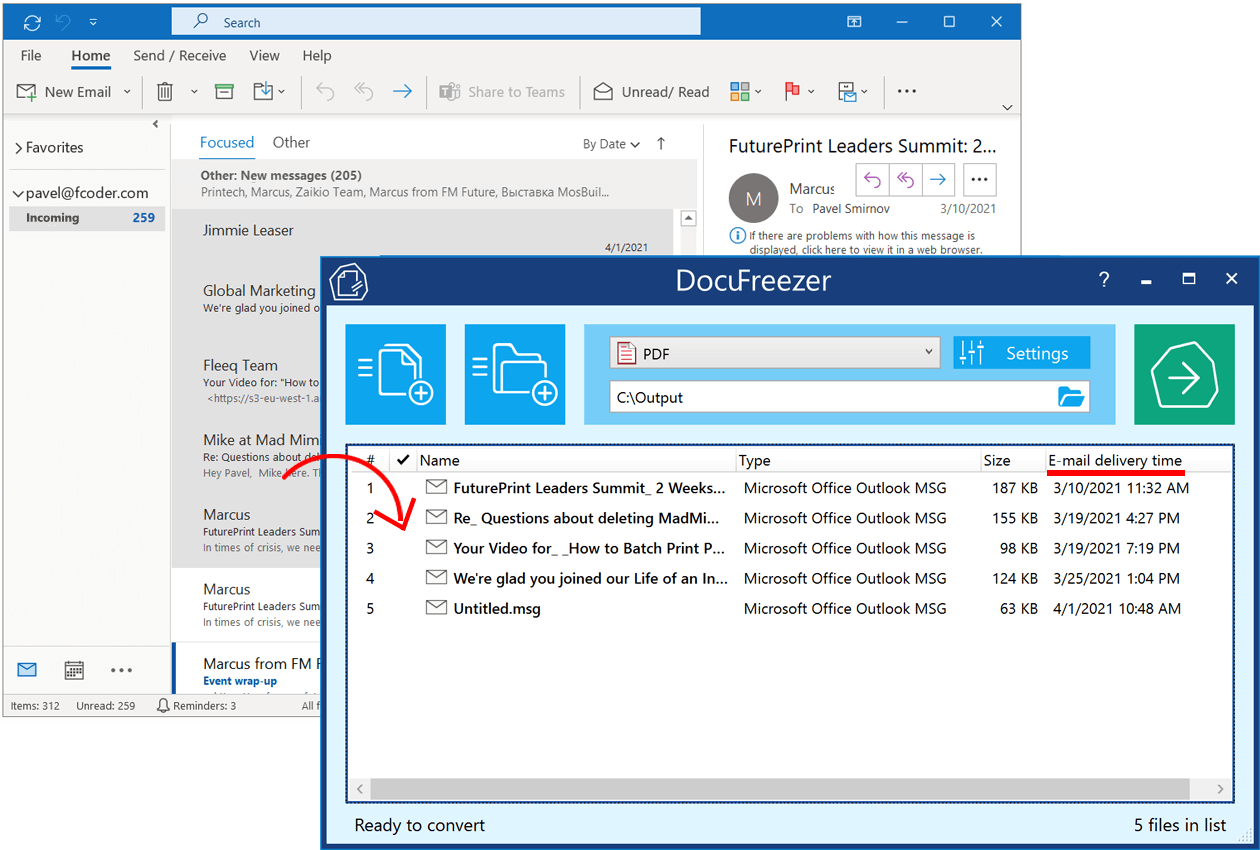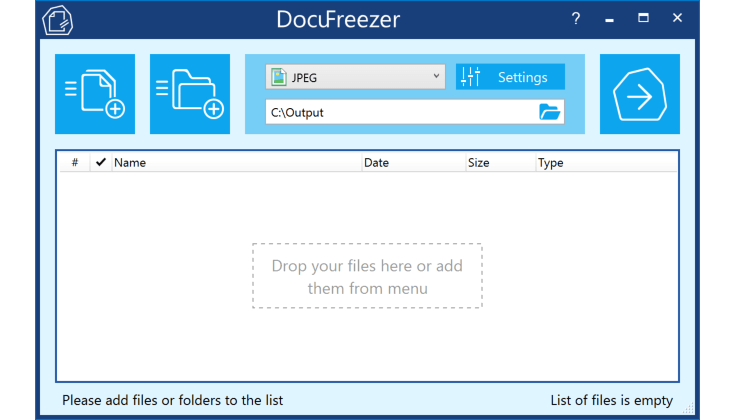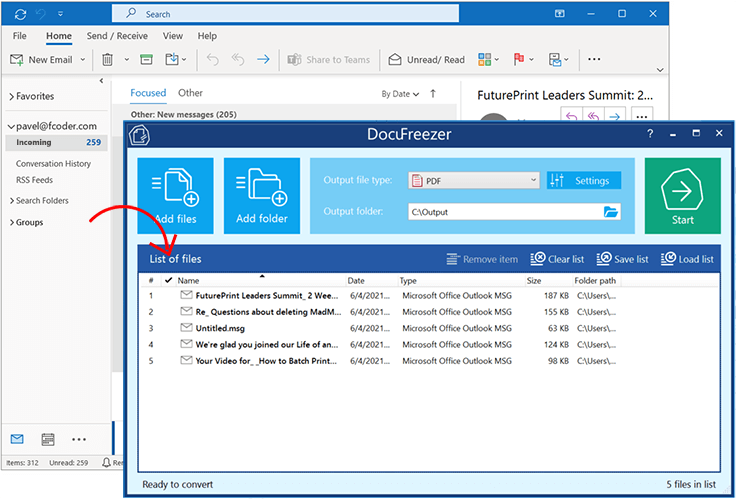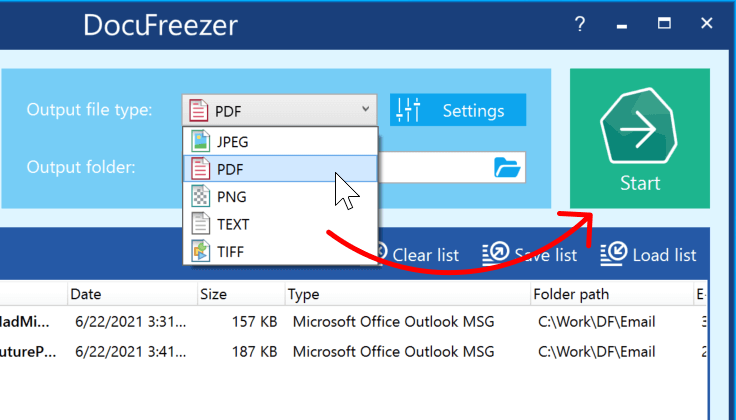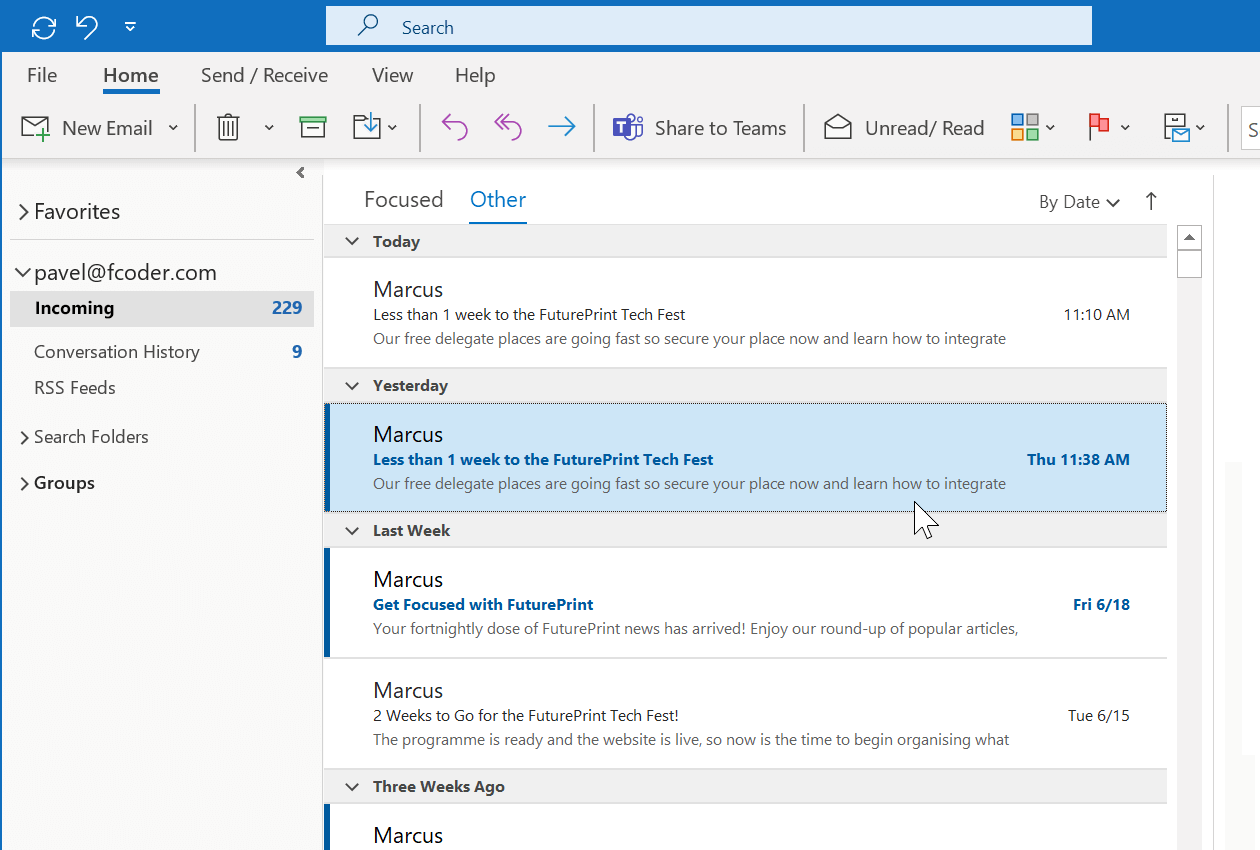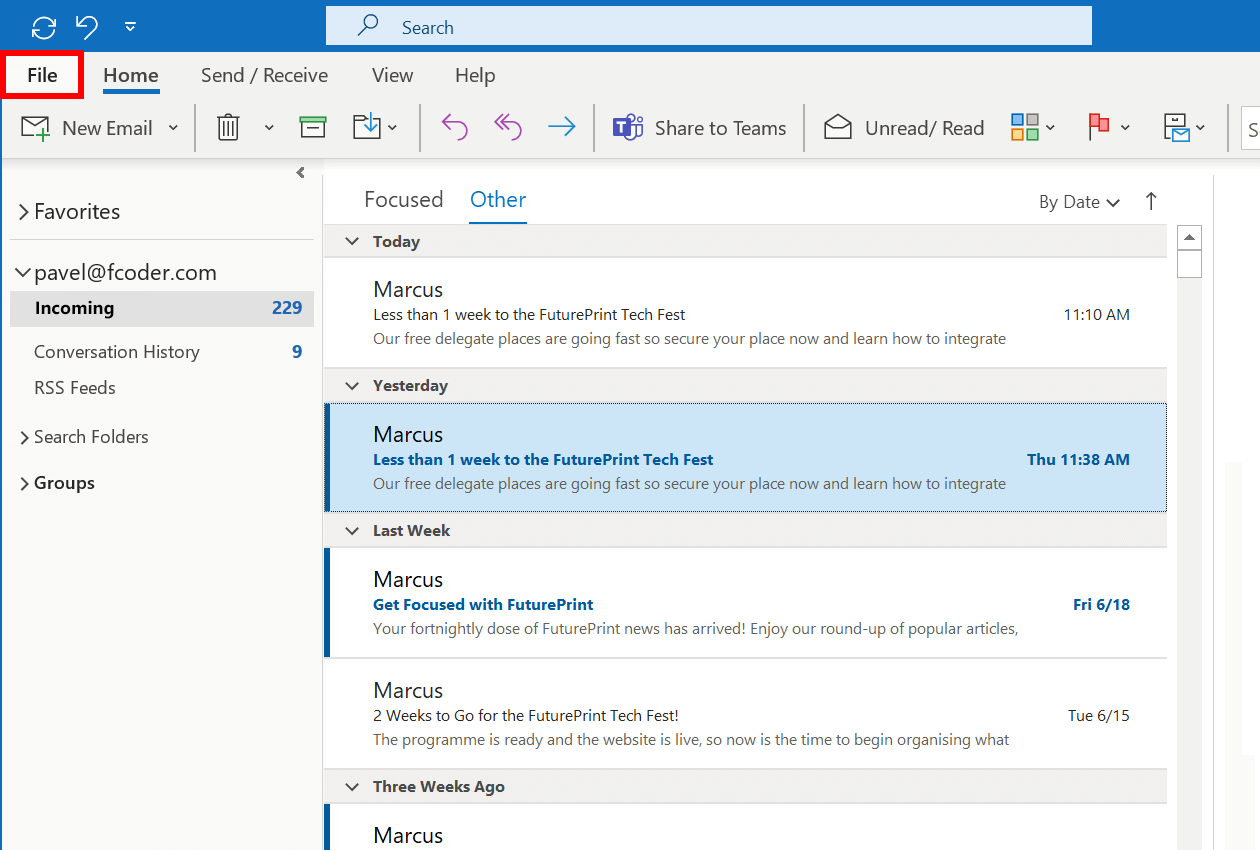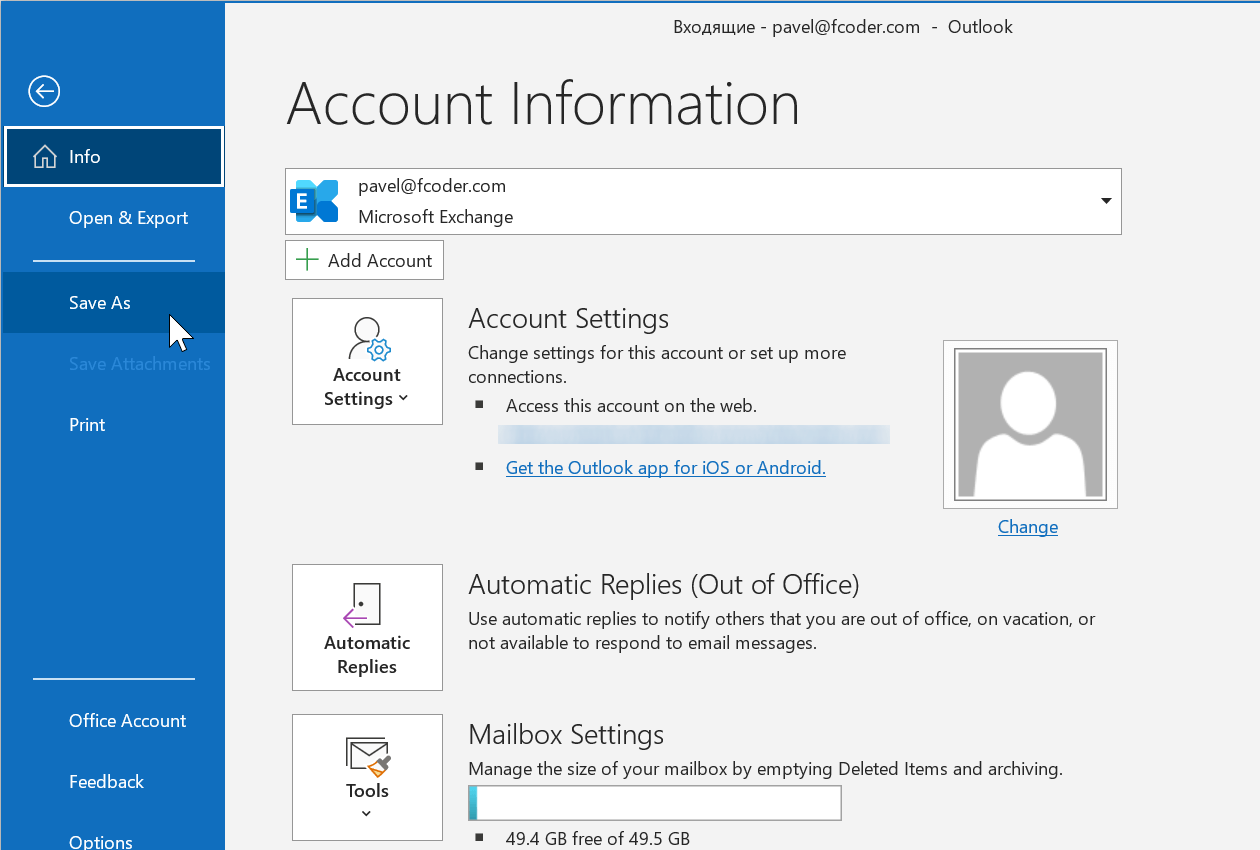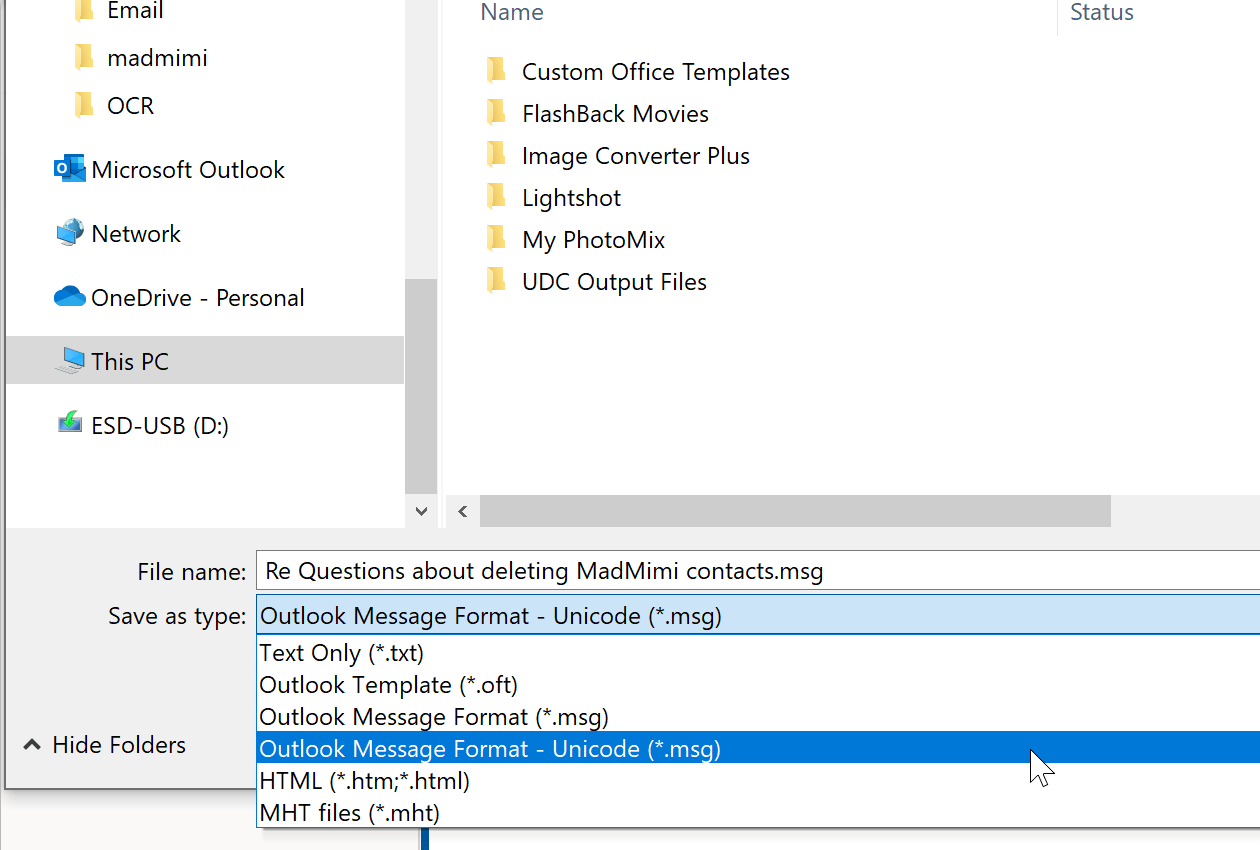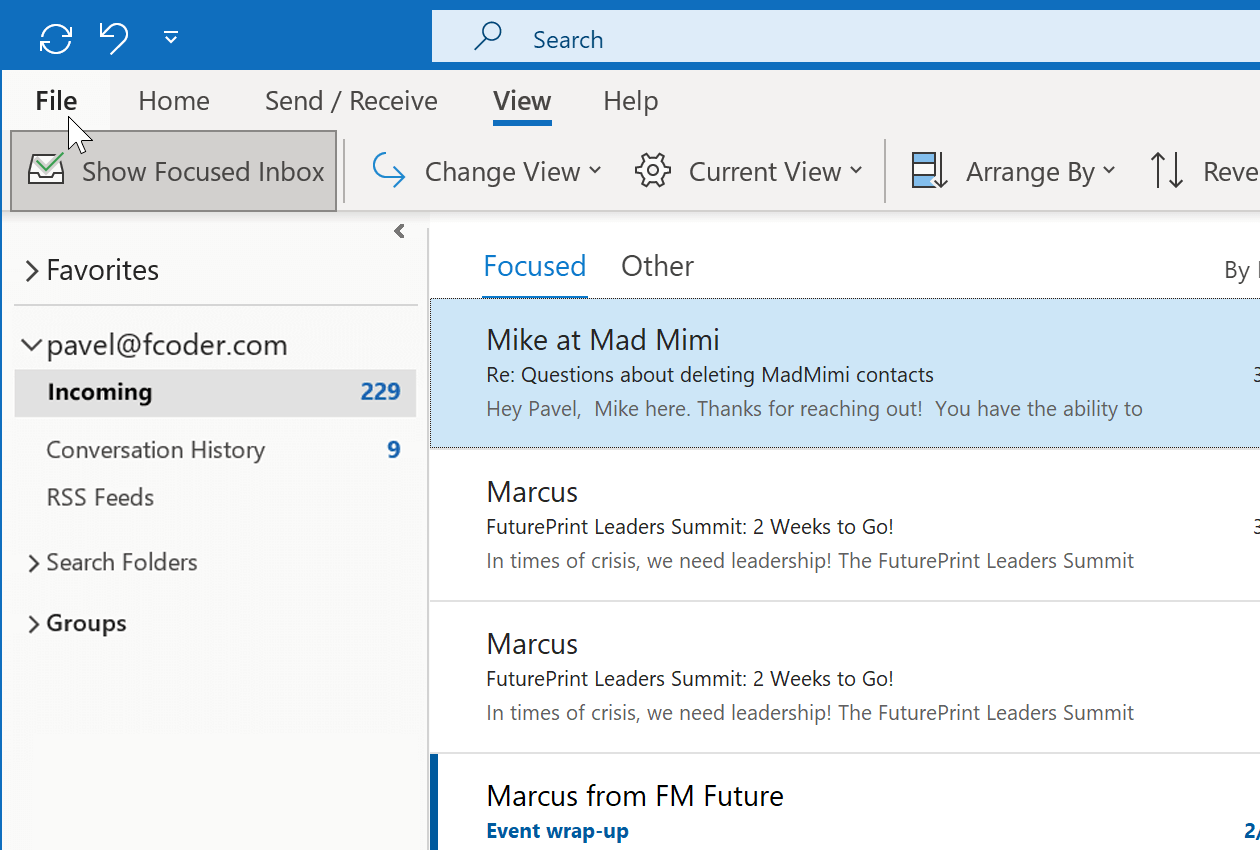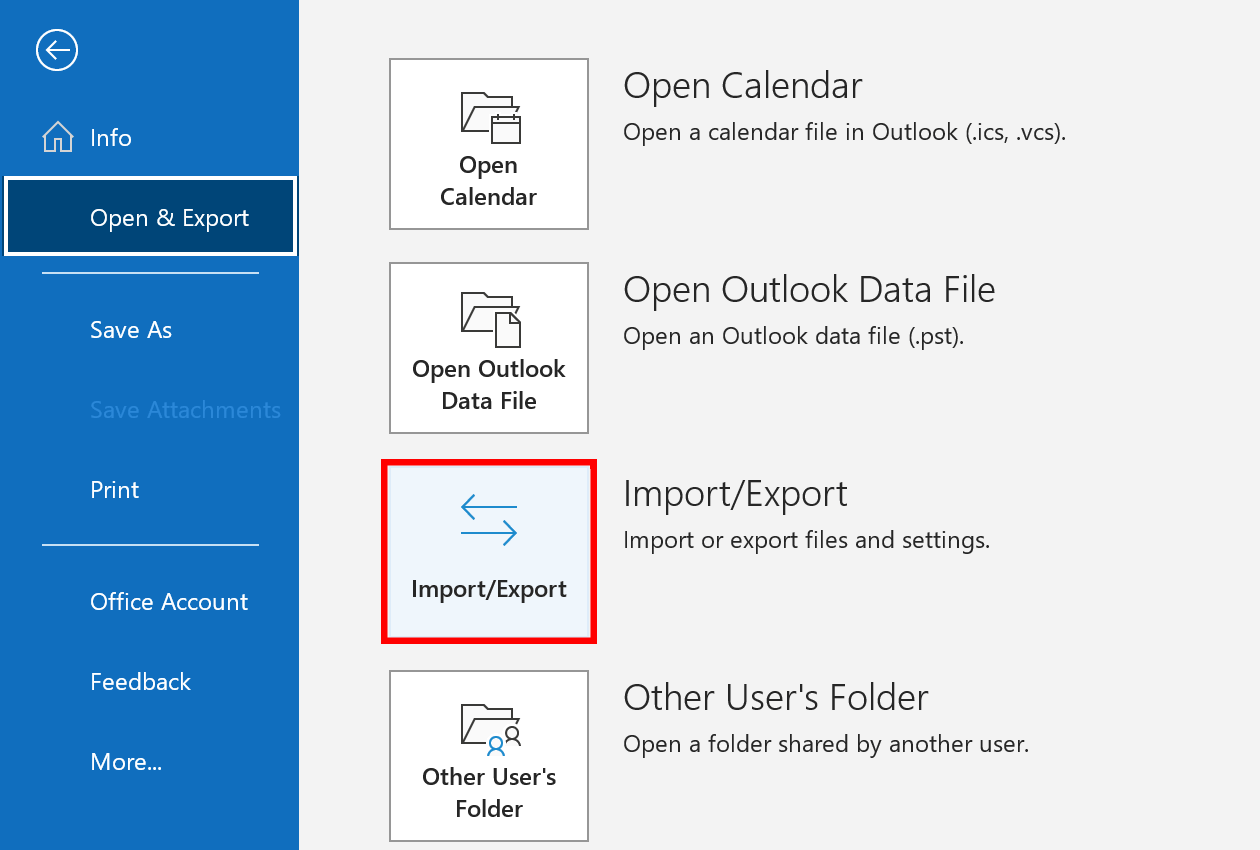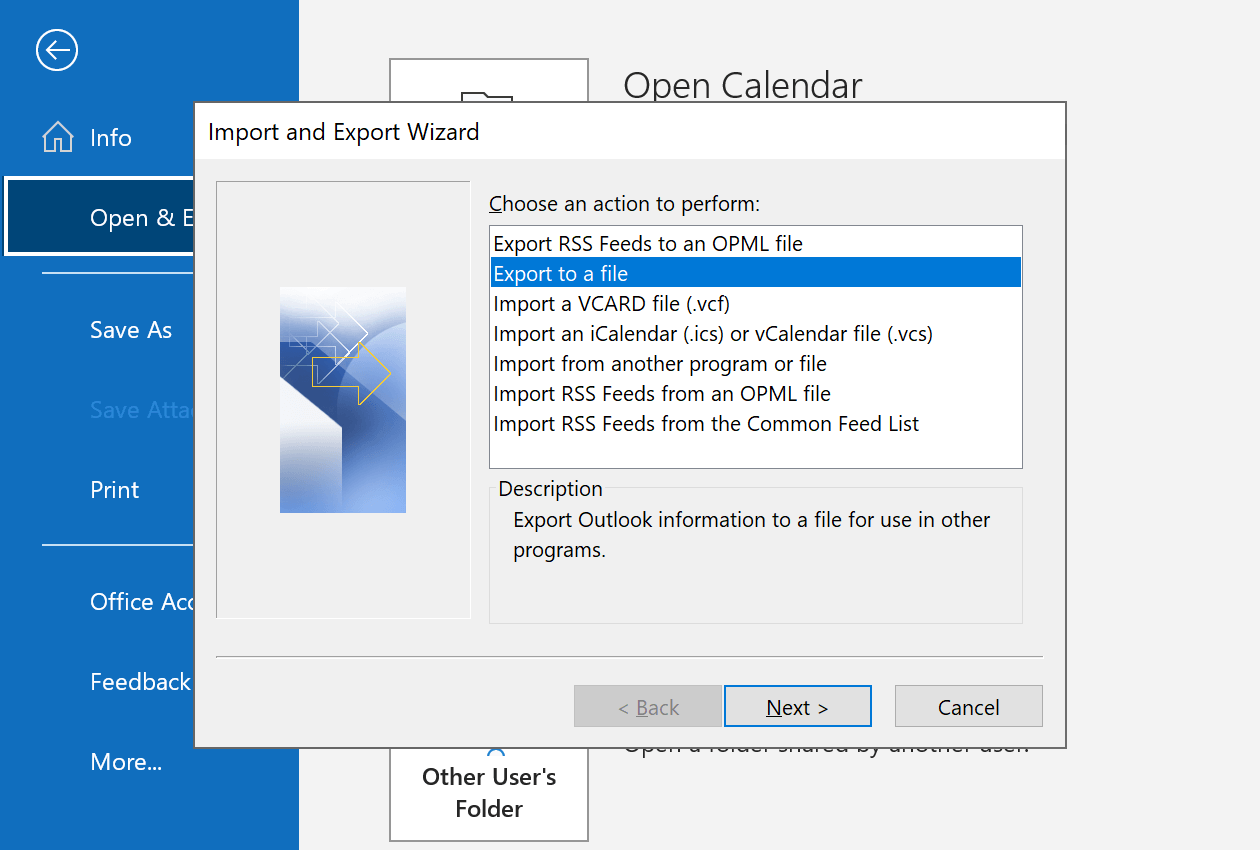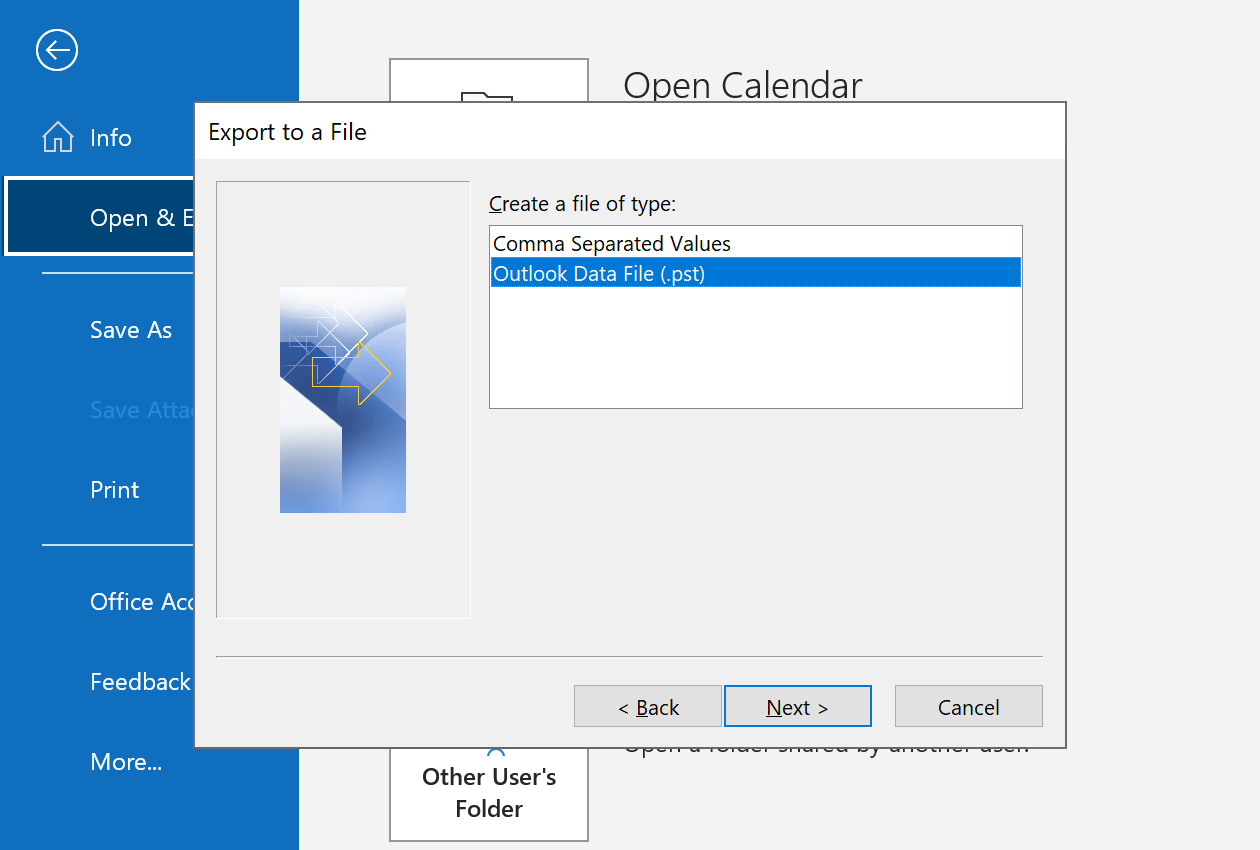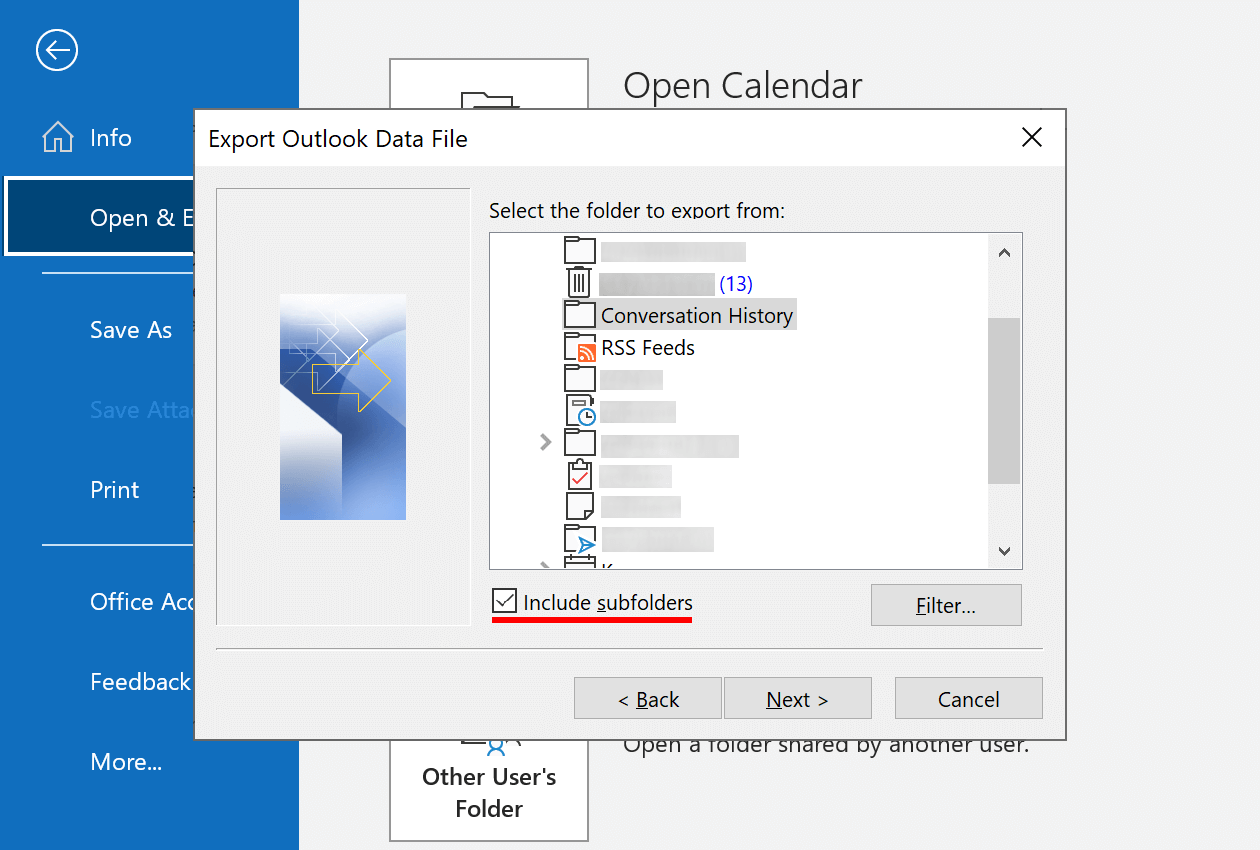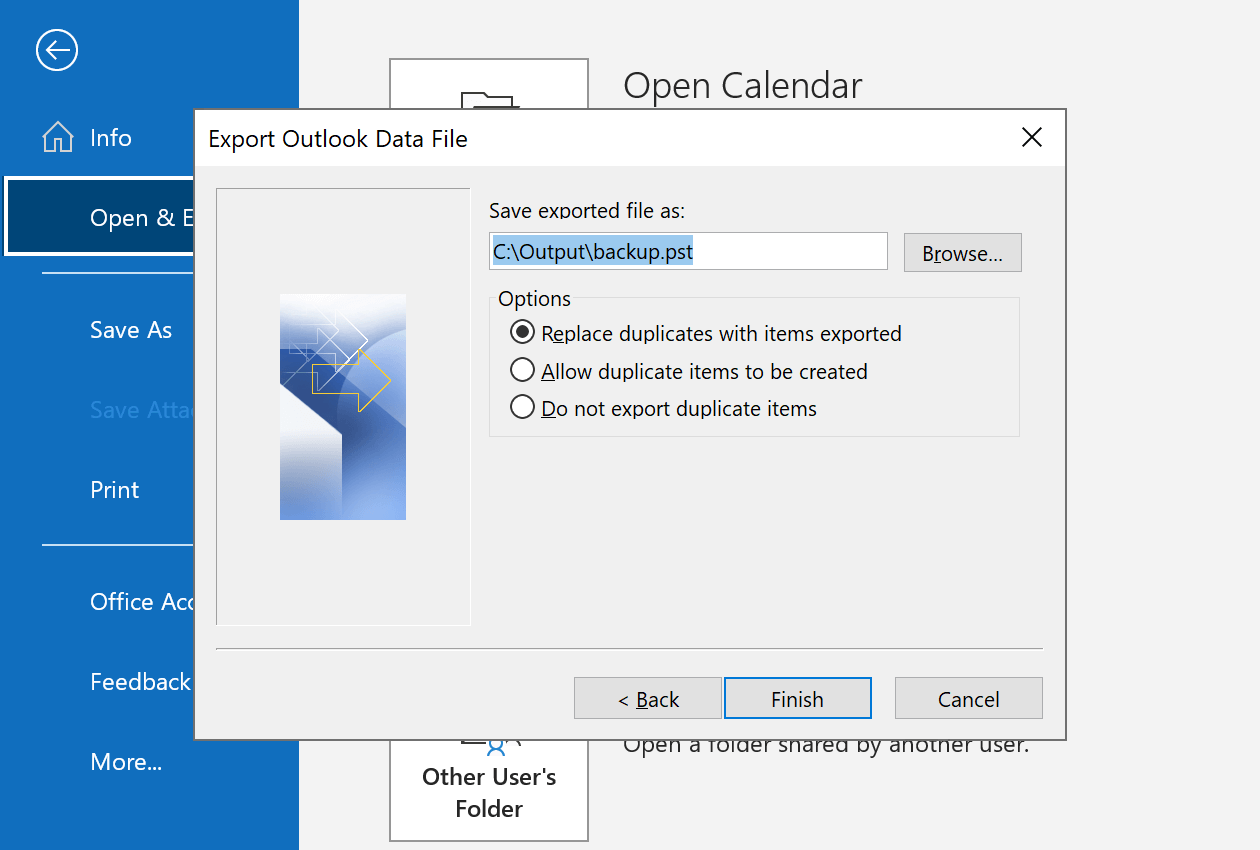Saving Outlook correspondence for archiving, safekeeping, backup, or other purposes is a common task. This article explains how to save email as PDF with or without attachments. Learn how to export emails from Outlook and convert them to PDF, either one by one or multiple files at once, using DocuFreezer.
- Ways to import Outlook emails to DocuFreezer
- How to save multiple emails as PDF
- Configure processing files with attachments
- How to export emails from Outlook to your PC
- How to convert PST to PDF with DocuFreezer
- Advanced settings for saving emails to PDF in DocuFreezer
- Combine each email with its attachment(s) into a single PDF
- Keep original names of email files when creating a merged PDF/TIFF
- Keep the original file creation date & time of converted emails
- Keep or disable email header
- Batch convert emails to a searchable PDF
- Set output paper size for Outlook MSG and EML files
- Sort emails by the delivery date and time before merging them to a single PDF
- Sort email attachments in the output folder
- Convert only the first pages of email files
- Add new emails as pages to an already existing PDF
Ways to import Outlook emails to DocuFreezer
Adding emails directly from Outlook
If you want to convert your Outlook emails to PDF or other formats, you first need to add them to DocuFreezer. To do this, open Outlook, select one or several emails, and drag and drop them onto the DocuFreezer main window using your mouse. The emails will be automatically imported to the List of Files as MSG files.
Importing emails located as files on your computer
If you already have email message files stored on your computer (as EML, MSG or another format), simply add them to DocuFreezer's List of files, just like any other file.
If you want to save emails from Outlook to your desktop first, use either of these 3 methods described below.
In general, Outlook allows you to export an email to either of the following formats:
- Text Only (TXT)
- Outlook Message Format (MSG)
- HyperText Markup Language (HTML)
- Web page archive file format (MHT)
- Outlook Template (OFT)
Surprisingly, saving emails as PDF isn't available in Outlook. There is no option to convert an email straight to commonly used PDF format in Microsoft Outlook 2013, 2016, 2019, or Outlook for Microsoft 365.
Therefore, you'll need a third-party email-to-PDF converter for this task. Besides, if you have many emails to convert, it can be very time-consuming. In this case, it is a good idea to use batch conversion software such as DocuFreezer.
How to save multiple emails as PDF
1. Open DocuFreezer
DocuFreezer is a handy file converter that can turn emails with attachments into PDF (standard PDF or PDF/A), plain text TXT, or images: JPEG, PNG, TIFF.
2. Drag'n'drop messages directly from Microsoft Outlook to DocuFreezer
Add your email messages to DocuFreezer directly from Microsoft Outlook simply by drag'n'dropping them.
Note: if you have your email message files already saved on your PC (as EML, MSG, PST, HTML, TXT, etc.), you can drag and drop them the same way or load them via the Add files or Add folder button.
3. Select PDF as output format and start batch conversion
If you don't have any specific requirements, you can keep the settings default. Just click Start after selecting PDF as output format, and the batch conversion process will begin.
As a result, you'll get each email and each attachment as separate PDF files. Learn about other ways to handle attachments →
Download email-to-PDF conversion software
Configure processing files with attachments
One of the common tasks is creating a combined PDF from an email and attachment(s). With DocuFreezer, you can save each email with its attachments into a single multi-page PDF, in batch mode. Different attachment handling options are available:
- Ignore – convert emails only and ignore all attached files
- Separate – create separate files for each email and attachments (default option)
- Combine (attachments after main doc) – convert the email and append its attachment(s) after it
- Convert attachments only – process only attachments and ignore the main doc
- Combine (attachments before main doc) – convert the email and prepend its attachment(s) at the beginning
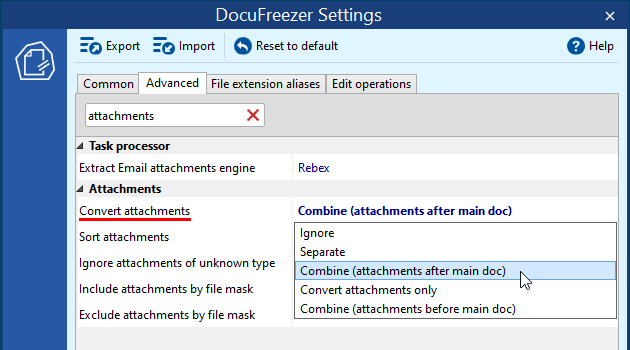
To maintain email body plus attachment(s) order (parent-child nesting) during the conversion process, we recommend using the Combine (attachments after main doc) option.
Using include or exclude mask for email attachments
To allow processing only or restrict specific attachment types, you can use a filter mask. To set the filters that would allow or restrict processing certain attachments, use the settings Include attachments by file mask and Exclude attachments by file mask in the Advanced settings.
Convert emails & attachments with DocuFreezer
How to export emails from Outlook to your PC
Below are 3 methods to backup email messages locally to your computer. Once the emails are saved as files on your PC, you'll then be able to import it to DocuFreezer for further conversion to PDF, TXT, or image format.
Method #1: Drag'n'drop to the desired location
Alternatively, you can use a drag and drop method. Select a handful of emails in Outlook, and drag'n'drop them onto a folder in File Explorer. For each one, Outlook will create an MSG file containing the message.
Note: You can select multiple emails by holding down the Ctrl key while clicking on them with your mouse, or use Ctrl+A to select them all.
Method #2: File > Save as
- Open Microsoft Outlook;
- Select the needed email;
- Click File > Save as;
- Select output location and file type (TXT, OFT, MSG, HTML, MHT)
- Click Save.
Method #3: Export an entire email folder (as PST)
- Open Outlook and click the File tab;
- Select Open & Export from the left sidebar;
- Click on the Import/Export option in the main panel;
- Select the Export to a file option;
- Select Outlook Data File (.pst) and click Next;
- Select the folder that you want to export. Make sure that the Include subfolders check box is selected. This ensures that everything in the selected folder will be exported. Choose Next;
- Check further options, select the output folder, add an optional password (if necessary) and click Finish.
The Personal Folders file (.PST) containing email, contacts, and calendar backup will be saved to your chosen folder and then added to DocuFreezer's List of files for processing.
How to convert PST to PDF with DocuFreezer
Once you have your email folder exported as a PST file from Outlook, you can now import it to DocuFreezer for further conversion to PDF. DocuFreezer will automatically get all emails from your PST file and add them to the List of files as MSG files.
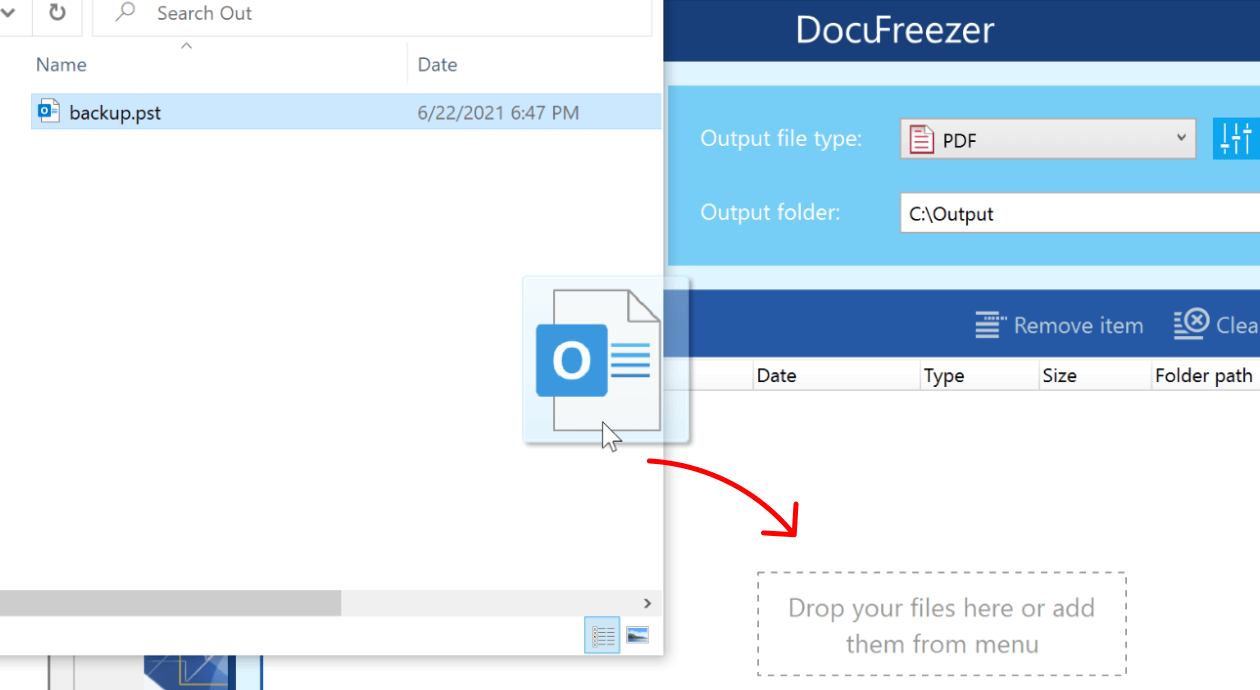
Afterwards, select PDF as Output file type, choose the Output folder, and click the Start button. File conversion will be finished in a short while. Congratulations! Now you have your email messages converted to PDFs.
DocuFreezer supports both Offline Outlook Data File and Outlook Data File types – those with PST and OST file extensions. These archive-based files can include email data.
These are other file types supported by DocuFreezer that can contain emails and related data (headers, attachments, calendar notes):
- MSG
- EML
- PST
- OST
- ICS
- HTML
- MHT (MHTML)
- TXT
- EMLX
- P7M
Convert PST to PDF with DocuFreezer
Advanced settings for saving emails to PDF in DocuFreezer
Combine each email with its attachment(s) into a single PDF
If you want to combine each email + attachment(s) into one PDF, use the Convert attachments: Combine (attachments after main doc) option in DocuFreezer Advanced settings. This will let you convert each new email plus its attachment(s) from the list into one multi-page PDF document.
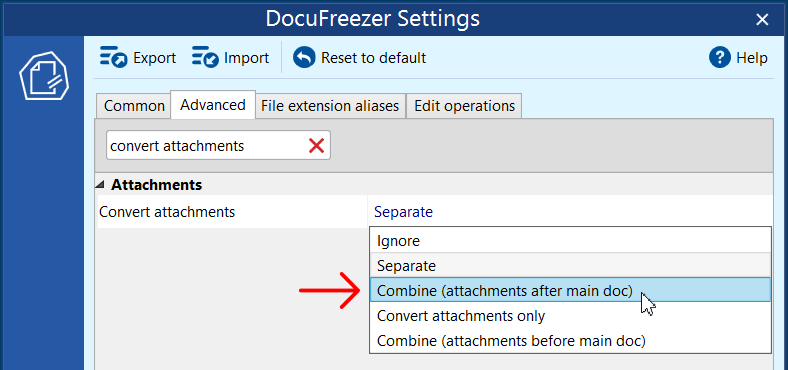
To make attachments go before the email, choose another option: Combine (attachments before main doc).
Keep original names of email files when creating a merged PDF/TIFF
If you're converting emails including email attachments into a PDF or TIFF and want to keep their original names, use the {*containername} macro. For example:
Combined file: {*containername}.pdf
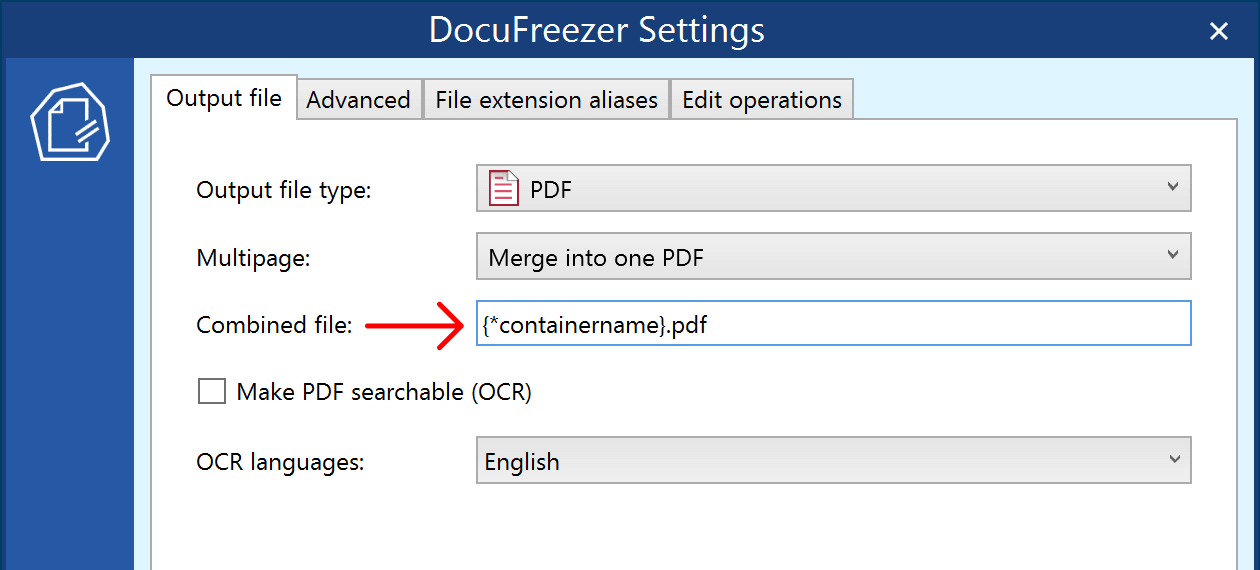
Note: you can do the same if you're converting to the TIFF format.
Keep the original file creation date & time of converted emails
You may encounter a situation when the resulting PDF files would be marked with the date and time of the completed file conversion process instead of the original date (YYYY-MM-DD) and time (HH:MM) of each email.
To fix this, enable Keep source files' original date/time in DocuFreezer. This setting can be found under the Files and folders section in the Advanced settings.

Keep or disable email header
When processing email message files, you can choose whether to keep the email header in the output files. By default, it is kept. To disable it, find the setting Keep message header in the Advanced settings and disable it.
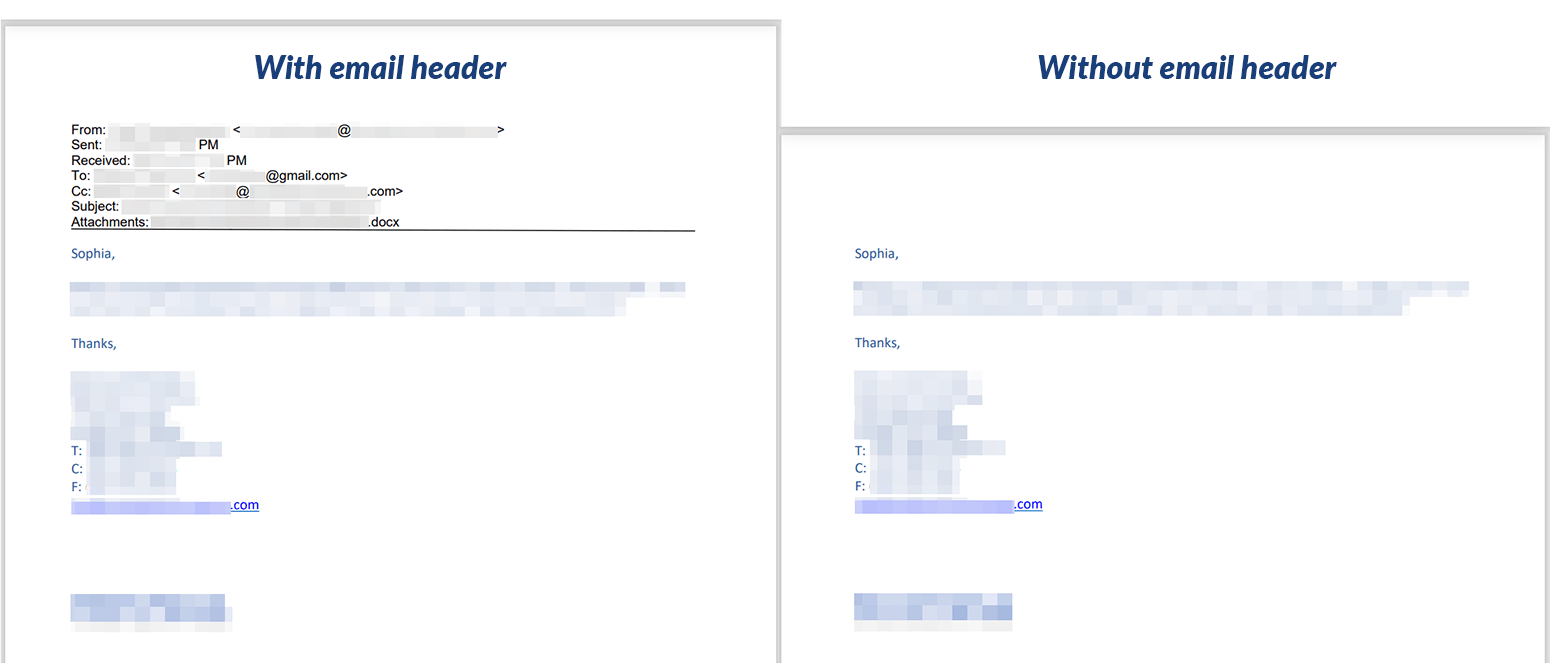
Batch convert emails to a searchable PDF
If the original emails contain text, the resultant PDFs will keep it. They will be searchable, so you'll be able to select and copy the text in them. However, if your original files are "flat" raster images and don't have a text layer (e.g., they are scans), DocuFreezer can recognize text via OCR. You'll be able to easily get editable PDFs or text files out of source email files.
Set output paper size for Outlook MSG and EML files
You can define the paper size of the output email pages. To do it, find the Page size setting under the E-mail message format section in DocuFreezer's Advanced Settings.

Sort emails by the delivery date and time before merging them to a single PDF
You may need to combine all emails from the List into a single PDF in order by date when the emails were received. To accomplish this task:
- Add email message files to DocuFreezer;
- Select Multipage: Merge into one PDF in the Common Settings;
- Enable E-mail delivery time column in DocuFreezer and sort files by clicking the column header. To activate the E-mail delivery time column in the List of files, right-click anywhere on the white space of this window and select Show/hide columns → Email delivery time;
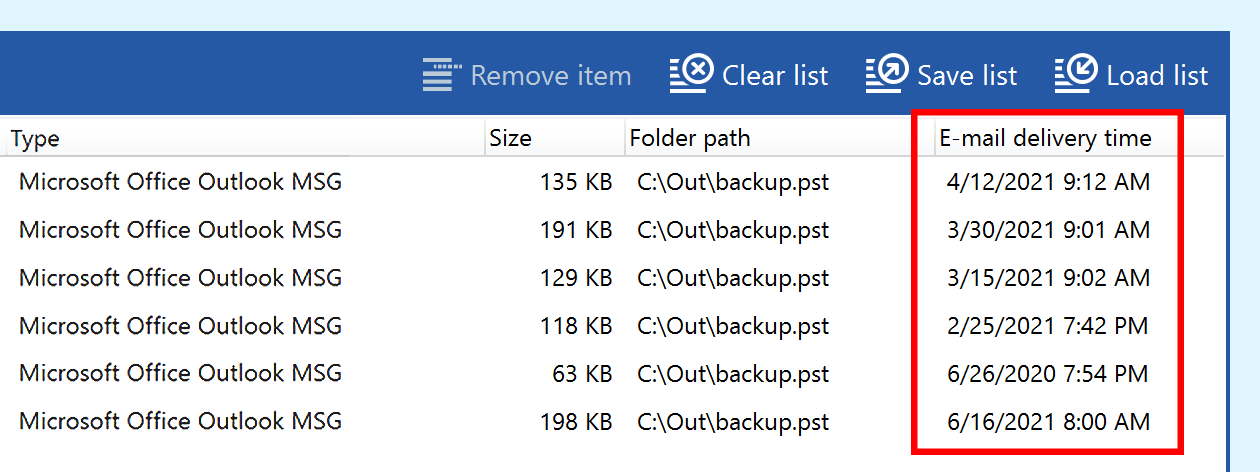
- (Optional) Set attachments' handling to Combine (attachments after main doc) to ensure the attachments go together with the email during the conversion.
Sort email attachments in the output folder
If you choose to save attachments as separate files, it is possible to sort email attachments in the output folder by name, type, size, date (or date descending, name descending, etc.).
Convert only the first pages of email files
If you need to save only the first page of each email, change the page range setting to 1 in DocuFreezer Common Settings.
Add new emails as pages to an already existing PDF
You can set DocuFreezer to add new pages to an already existing PDF. Change the setting If combined file already exists to Append to existing file. To make it work, both "new" and existing files must have the same filename. This will help you keep a single PDF updated with all relevant information when new emails are received.
